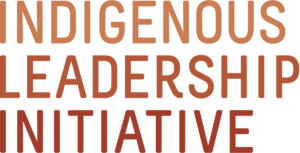Indigenous-Led Conservation Plays Pivotal Role at Parks Conference
By Valérie Courtois
High in the granite peaks and glacier valleys of the Rocky Mountains, Canada established its first national park in 1885. Government officials called it Banff after a district in Scotland, but the Assiniboine, Kootenays, Blackfoot and other Indigenous Peoples who were removed to create the park have their own names for the region—lands that supported their families and nourished their culture.
Now, more than 130 years later, Banff has a chance to tell a new story about the land. This week the town will host the 2017 Canadian Parks Conference, and for the first time at a major parks gathering, Indigenous conservation will play a prominent role.
The time has come for this kind of dialogue. Indigenous Nations in Canada are preserving vast stretches of ancient forest and pristine waters. Yet Canada doesn’t always recognize Indigenous Protected Areas and other designations as contributing to the national system and “counting” towards national targets. More partnerships between Indigenous and Canadians governments can help secure this recognition.
Sunset in the Dehcho. Through the Dehcho K’ehodi Stewardship Program, Indigenous Guardians care for the land on behalf of their communities. Credit: Dahti Tsetso
Greater respect for Indigenous-led conservation will benefit all of us. It will help Canada meet pressing biodiversity and carbon targets. It will help Indigenous Nations express our right to determine our future as Peoples and the future of our lands. And it will help everyone gain cleaner water, healthier forests and a more stable climate.
Indigenous Peoples have been tending this continent for millennia. Canadian colonialism sought to disrupt our ties to the land by pushing Indigenous Peoples from our territories and sending generations to residential schools.
But we are resilient. Our cultural responsibility to care for the land is stronger than the trauma of colonialism. And so Indigenous Guardians across the country serve as stewards on the land. And Indigenous nations embrace modern tools to protect the forests, watersheds and wildlife.
Indigenous governments are helping establish new national parks and conservation areas, from the Torngat Mountains in Labrador to the forthcoming Thaidene Nene in the Northwest Territories. We are supporting the creation of internationally recognized conservation areas, such as the new Tsá Túé International Biosphere Reserve in the Northwest Territories and proposed Pimachiowin Aki World Heritage Site in Manitoba and Ontario.
Many Indigenous nations also identify protected areas during land use planning. All of the area Poplar River First Nation considers to be their traditional territory is protected by provincial law from major development, and the Dehcho First Nations in the NWT are finalizing one that will protect about 50 percent of their territory.
If Canada fully recognizes these and other Indigenous conservation efforts, it could become a true global conservation leader. This year, Canada must prepare to meet several requirements, from caribou goals to Convention on Biodiversity targets. Canada can meet these standards—but only by honoring Indigenous Protected Areas.
The parks conference in Banff provides a welcome forum to discuss these opportunities. ILI Senior Advisor Dave Courchene, Jr. will give the opening keynote on “Spiritual Connection to the Land and Reconciliation.” ILI Senior Advisor Miles Richardson will deliver a keynote on empowering local communities to create and manage protected areas. And several other panels, events and workshops will feature Indigenous leaders and Indigenous Guardians from across the country.
These conversations will take place beneath mountains taken from Indigenous Peoples. This is an inescapable part of Canadian history, but we envision a better future. We believe the people who care for Canada’s parks and the people who care for Indigenous territories can find common ground. And we believe true reconciliation begins on the land.
“Indigenous Nations in Canada are preserving vast stretches of ancient forests and pristine waters.”
“Indigenous governments are helping establish new national parks, from the Torngat Mountains in Labrador to the forthcoming Thaidene Nene in the Northwest Territories.”
“If Canada fully recognizes these and other Indigenous conservation efforts, it could become a true global conservation leader.”


